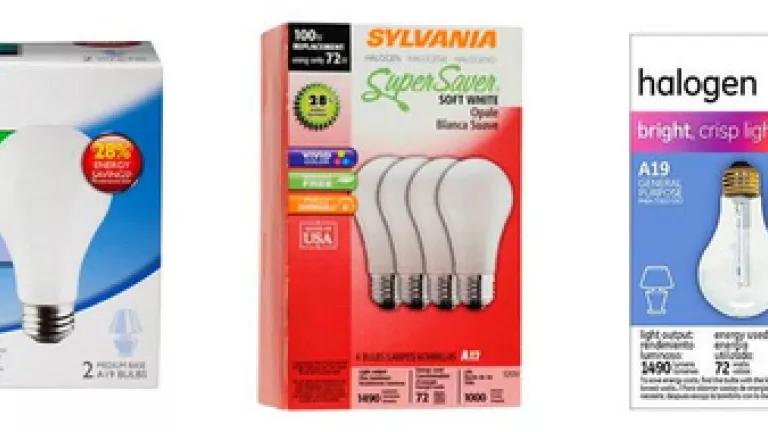
Earlier this month, Representative Barton reintroduced his bill to “save the 125-year-old incandescent light bulb,” which I blogged about when it was first introduced in the last Congress. Given the reintroduction of the bill, I thought it would be a good time to revisit the details on the lighting efficiency standard as well as point you to NRDC’s new fact sheet that provides more detail.
In 2007, President Bush signed a law that requires the 125-year-old light bulb to be more energy efficient. The first phase of the energy efficiency standard for light bulbs takes effect January 1, 2012, and requires new bulbs to use 25 to 30 percent less energy starting with the conventional 100-watt bulb. The second phase will go into effect in 2020 and requires new bulbs to be at least three times more efficient than today’s incandescent bulbs, which means they will save 65 percent energy. This standard will lead the way to a new generation of energy-efficient light bulbs and save consumers more than $10 billion annually, avoid the need for 30 new power plants, and decrease CO2 emissions by 100 million tons per year. To put the national savings numbers in perspective, repealing the standard would effectively cost each household $100 to $200 or more every year in increased home energy bills.
The lighting efficiency standard is technology neutral in that it sets a requirement for how much energy a bulb can use to produce a given amount of light (lumens), but does not specify what technology can be used to meet the requirement. For instance, while traditional incandescent bulbs waste 90 percent of the energy they use as heat and therefore won’t meet the standards, there are new more efficient incandescent bulbs that do meet the standards (such as the new energy saving halogens shown below, which are a type of incandescent and look and perform the same as conventional incandescent bulbs). These products were developed and are being introduced by lighting manufacturers like Osram Sylvania, GE, TCP and Philips in direct response to the standards.
An important point to note is that since the standards are technology neutral, consumers will still have a wide array of choices when it comes to buying a light bulb. This means there will be bulbs that fit in every socket and application. Consumers will be able to choose from bulbs of various shapes, sizes, technologies brightness levels, and color temperatures. In addition, many of these new products would not have been introduced in the absence of the federal standards set by Congress. While compact fluorescent lamps (CFLs) currently offer consumers the biggest bang for their buck, the standard does not require them and consumers will still have plenty of other options.
The national lighting efficiency standards are also providing certainty and uniformity to manufacturers who would otherwise face a patchwork of varying state regulations. For instance, California has already begun to implement the lighting standard a year in advance of the federal standard and without federal regulation other states would likely implement their own standard. The lighting industry unanimously supports the standards, in part because the standards provide companies the certainty they need to invest in new manufacturing facilities, many of them in the United States, which is exactly what they have been doing. For example, Cree, Lighting Sciences Group Corp, and Philips have created several thousand American jobs producing the next generation of efficient LED bulbs. For more examples of how industry is investing in US capacity to meet the standard, see my previous blog and our fact sheet.
The bottom line is the new standards will gradually retire the 125-year-old inefficient light bulb, which is easily the least efficient piece of equipment in our homes. In its place will be a broad suite of new and improved bulbs, all of which use a lot less energy to produce the same amount of light and will save consumers money. And what could be better than a light bulb that lowers my electricity bill and my carbon footprint? That’s a bright idea in my book.
